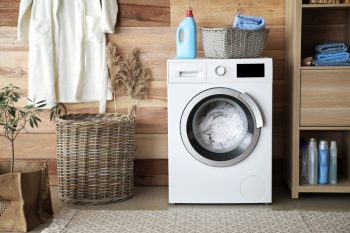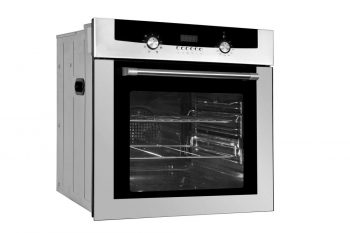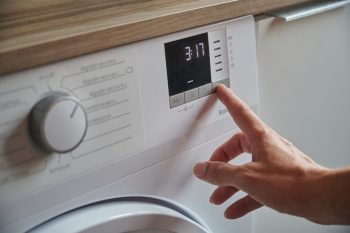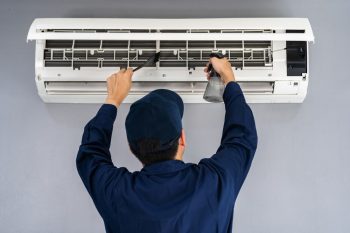
When it comes to vacuuming, having a powerful suction can be beneficial. It ensures that your vacuum picks up as much dirt, dust, and debris as possible, leaving your floors and carpets clean. However, there are times when too much suction can be a problem. It can make the vacuum difficult to push, potentially damage delicate surfaces or fabrics, and even wear out the vacuum cleaner’s components faster. This comprehensive guide will walk you through different ways to reduce suction on a vacuum, factors that can cause excessive suction, and the importance of maintaining the right suction power.
Reducing suction on a vacuum can be achieved by adjusting the suction settings if your vacuum has this feature, opening the air inlet valve, using a different attachment, cleaning or replacing clogged filters, and checking for blockages in the hose, tube, or brush. These steps can help prevent damage to delicate surfaces, make the vacuum easier to maneuver, prolong the life of the vacuum cleaner, and improve energy efficiency.
Why Might Someone Need To Reduce Suction On Their Vacuum?
There are several reasons why you might need to reduce the suction power on your vacuum cleaner:
- Delicate surfaces: High suction power can damage delicate surfaces like curtains, drapes, or delicate fabrics. Reducing the suction power can help prevent damage while still effectively cleaning these surfaces.
- Difficulty maneuvering: Excessive suction can make it difficult to push the vacuum cleaner across certain surfaces, such as thick carpets. Reducing the suction power can make it easier to maneuver the vacuum cleaner.
- Preventing damage to the vacuum cleaner: Over time, excessive suction can cause wear and tear on the vacuum cleaner’s components, such as the motor, belts, and hoses. Reducing the suction power can help prolong the life of the vacuum cleaner.
- Energy efficiency: Using a lower suction setting can help save energy, as the vacuum cleaner’s motor will not have to work as hard.
How To Adjust Suction Power On A Vacuum Cleaner
Check for Adjustable Suction Settings
Some vacuum cleaners have adjustable suction settings, which allow you to control the suction power. If your vacuum has this feature, simply lower the suction setting. For example, the Dyson V15 has three modes of suction power: Boost, Medium, and Eco. You can switch to Eco mode if you find the suction too strong in Boost or Medium mode.
Open the Air Inlet Valve
If your vacuum cleaner has an air inlet valve, opening it can help reduce suction power. This valve allows air to enter the vacuum, reducing the suction power.
Use a Different Attachment
Some vacuum cleaners come with various attachments designed for different surfaces. Using an attachment with a wider opening or one that’s specifically designed for delicate surfaces can help reduce suction.
Clean or Replace Filters
Clogged filters can affect the suction power of your vacuum cleaner. Regularly cleaning or replacing the filters can help maintain optimal suction power.
Check for Blockages
Ensure there are no blockages in the hose, tube, or brush that could be affecting the suction power.
Common Factors That May Cause a Vacuum Cleaner to Have Too Much Suction
- Clogged filter: A clogged filter can lead to poor ventilation of the vacuum cleaner, which can affect the amount of suction power.
- Blockages: Blockages in the vacuum’s tubing or hose can cause an increase in suction as the vacuum tries to compensate for the reduced airflow.
- Damaged or worn brush rolls: If the brush rolls are damaged or worn, they may not be able to effectively pick up dirt and debris, causing the vacuum to work harder and generate more suction.
- Gaps in the airflow: Holes or rips in the vacuum cleaner’s hose can greatly reduce suction, causing the vacuum to work harder and generate more suction.
Dangers of Using a Vacuum Cleaner with Too Much Suction
Using a vacuum cleaner with too much suction can potentially cause several issues, including damage to carpets and furniture. It can cause carpets to fray, fuzz, or pull apart, and may also damage certain types of flooring. Moreover, the increased noise from higher suction power can be disruptive, and the extra strain on the motor can lead to overheating or reduced lifespan.
Conclusion
While a strong suction power is often desirable in a vacuum cleaner, it’s important to know how to adjust it to prevent damage to your vacuum or your home. By understanding how to adjust the suction power and maintain your vacuum cleaner, you can ensure that it operates efficiently for many years to come. Regular maintenance, including cleaning filters, checking for blockages, and replacing worn parts, can help maintain optimal suction and prolong the life of your vacuum cleaner.
Frequently Asked Questions
How often should I clean or replace the filters in my vacuum cleaner?
The frequency at which you should clean or replace your vacuum filters largely depends on usage. However, as a general rule, vacuum filters should be cleaned every 3 months and replaced every 12 months.
How can I tell if my vacuum cleaner has too much suction?
Signs that your vacuum cleaner may have too much suction include difficulty pushing the vacuum, visible damage to delicate surfaces, increased noise, and the vacuum cleaner overheating more frequently than usual.
Can all vacuum cleaners adjust their suction power?
Not all vacuum cleaners have adjustable suction power. It’s a feature more common in higher-end models. If your vacuum cleaner does not have adjustable suction power, you can still reduce suction by using different attachments or opening the air inlet valve if your model has one.
How can I prevent blockages in my vacuum cleaner?
Regular maintenance can help prevent blockages. This includes emptying the dust container or changing the bag frequently, cleaning the filters, and checking the hose and attachments for obstructions.
What should I do if my vacuum cleaner is still hard to push even after reducing the suction?
If your vacuum is still difficult to push after reducing the suction, it might be due to a problem with the wheels or the height setting. Make sure the wheels are not damaged or blocked and adjust the height setting if your vacuum has one. If the problem persists, you may need to consult a professional or the manufacturer.












